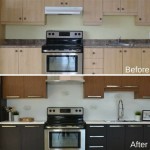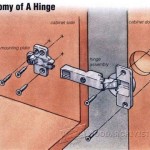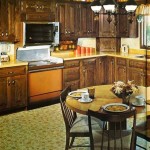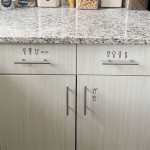How Thick Should Plywood Be For Kitchen Cabinets?
When constructing kitchen cabinets, choosing the right plywood thickness is crucial for both functionality and longevity. The thickness of the plywood impacts the cabinet's strength, durability, and overall stability. This article will explore the factors that influence plywood thickness for cabinets and provide a comprehensive guide to help you determine the ideal thickness for your specific needs.
Factors Affecting Plywood Thickness for Kitchen Cabinets
Several factors necessitate careful consideration when determining the ideal plywood thickness for kitchen cabinets. These include:
- Cabinet Size and Weight: Larger and heavier cabinets require thicker plywood to ensure structural integrity and prevent sagging or warping.
- Door Style and Hardware: Cabinets with heavier doors or complex hardware require thicker plywood to support the weight and prevent stress on the frame.
- Cabinet Usage: Cabinets used for heavy items like pots and pans require thicker plywood to withstand the weight and impact.
- Personal Preference: Some individuals prioritize a certain level of thickness for aesthetic reasons, while others prioritize cost-effectiveness.
Recommended Plywood Thicknesses for Kitchen Cabinets
While the ideal thickness can vary depending on individual needs, a general guideline for kitchen cabinets is as follows:
- 3/4-inch Plywood: This thickness is considered the standard for kitchen cabinets and offers a good balance of strength, stability, and affordability. It is suitable for most cabinet types and can handle moderate weight and usage.
- 5/8-inch Plywood: This thickness is a thinner option that can be suitable for lighter cabinets or cabinets with simple door styles. It offers a more economical choice but might not be as durable as 3/4-inch plywood.
- 1-inch Plywood: This thickness is typically used for heavier cabinets or cabinets designed to support significant weight. It provides exceptional strength and durability but comes at a higher cost.
Specific Applications and Considerations
Beyond the general recommendations, it is essential to consider specific applications when making a plywood thickness decision. For example:
- Base Cabinets: Due to the weight of appliances and storage items, base cabinets often benefit from thicker plywood, typically 3/4-inch or even 1-inch.
- Wall Cabinets: While thinner plywood can be used for wall cabinets, 3/4-inch plywood is recommended for increased stability and support, especially for cabinets with heavier doors or complex hardware.
- Island Cabinets: Island cabinets often support significant weight and require at least 3/4-inch plywood, and thicker plywood may be necessary depending on the size and design.
- Drawers: Drawer sides and bottoms are also important to consider. 1/2-inch plywood is typically sufficient for drawer sides, while 3/4-inch plywood is recommended for drawer bottoms to ensure stability and prevent sagging.
When in doubt, it is always advisable to consult with a professional carpenter or kitchen designer. They can provide personalized recommendations based on the specific design, intended usage, and weight capacity of your cabinets.

Cabinet Quality Kitchen Rta Cabinets Orange County Pre Made Whole Quartz Countertop Slab Prefab Granite Installation

Cabinet Composition What Makes A High Quality

Choosing The Best Type Of Plywood For Cabinets Columbia Forest S

Which Plywood Is Best For Modular Kitchen Designcafe

Which Plywood Is Best For Modular Kitchen Designcafe

Unfinished Kitchen Cabinets And Bathroom Cabinet Construction

Which Plywood Is Best For Modular Kitchen Designcafe

What Size Plywood Should You Use To Build Cabinets Ehow

Kitchen Cabinets Made From Plywood The Features Of For Kitchens

Selecting Hardwood Plywood For Cabinetry Columbia Forest S
Related Posts








